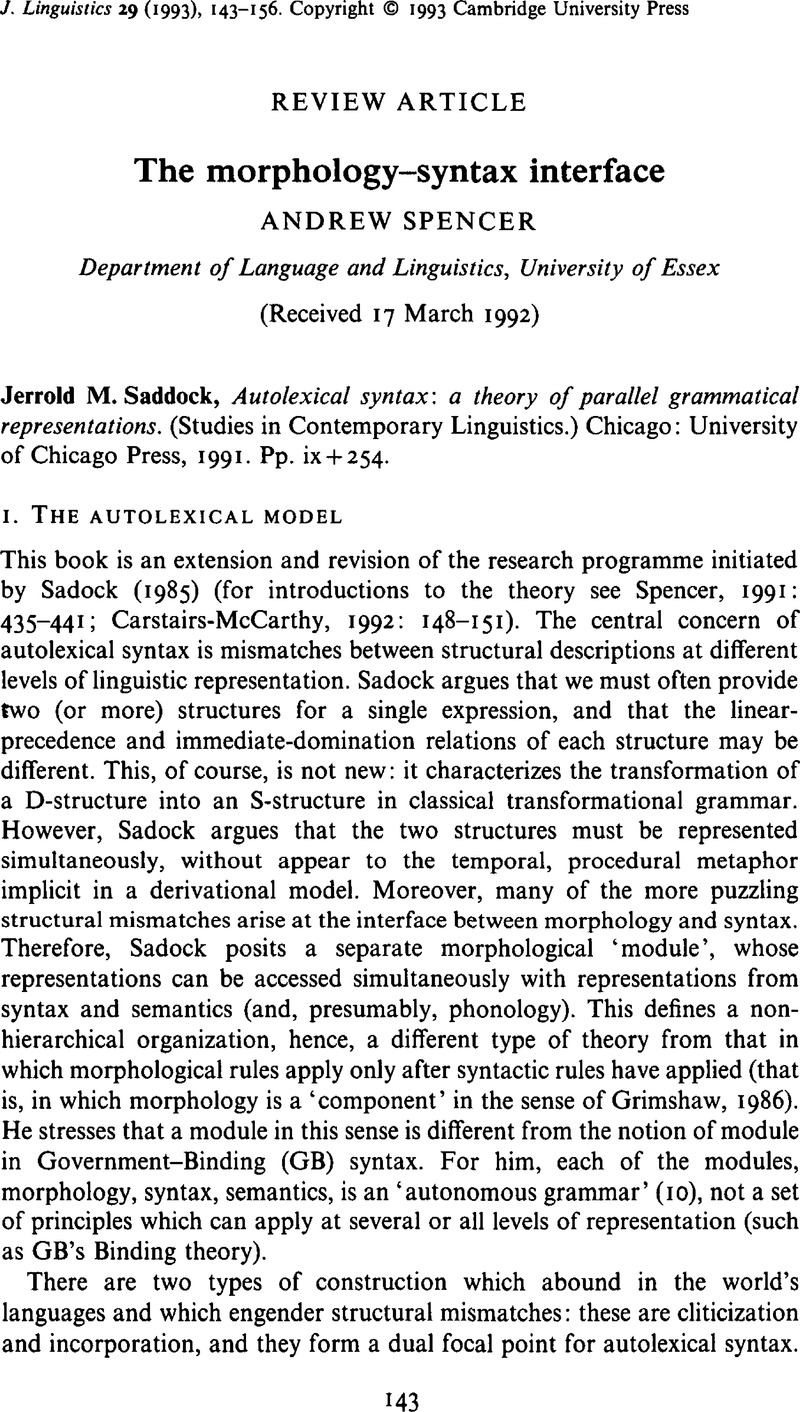No CrossRef data available.
Article contents
The morphology–syntax interface
Published online by Cambridge University Press: 28 November 2008
Abstract
An abstract is not available for this content so a preview has been provided. Please use the Get access link above for information on how to access this content.

- Type
- Review Article
- Information
- Copyright
- Copyright © Cambridge University Press 1993
References
REFERENCES
Aronoff, M. (1988). Head operations and strata in reduplication: a linear treatment. Yearbook of Morphology I. 1–16.Google Scholar
Brezhnev, L. I. (1977). Majηə-oktjabr′ ənqPam PəttPəjoltəlgərgən Porawerwaraten (Great October and the progress of mankind), Magadan: Magadanken taknigaηəwən.Google Scholar
Gazdar, G., Klein, E., Pullum, G. & Sag, I. (1985). Generalized phrase structure grammar. Oxford: Blackwell.Google Scholar
Grimshaw, J. (1986). A morphosyntactic explanation for the Mirror Principle. LIn 17. 747–750.Google Scholar
Hammond, M. & Noonan, M. (eds.) (1988). Theoretical morphology. Orlando: Academic Press.CrossRefGoogle Scholar
Klavans, J. (1985). The independence of syntax and phonology in cliticization. Lg 61. 95–120.Google Scholar
Marantz, A. (1988). Clitics, morphological merger, and the mapping to phonological structure. In Hammond, M. & Noonan, M. (eds.). 253–270.CrossRefGoogle Scholar
Perlmutter, D. (1971). Deep and surface structure constraints in syntax. New York: Holt, Rinehart & Winston.Google Scholar
Pollock, J.-Y. (1989). Verb movement. Universal Grammar, and the structure of IP. LIn 20. 365–424.Google Scholar
Rosen, S. (1989). Two types of noun incorporation: a lexical analysis. Lg 65. 294–317.Google Scholar
Rudin, C. (1988). On multiple questions and multiple WH fronting. Natural Language and Linguistic Theory 6. 445–502.Google Scholar
Sadock, J. (1985). Autolexical syntax: a proposal for the treatment of noun incorporation and similar phenomena. Natural Language and Linguistic Theory 3. 379–439.Google Scholar
Sadock, J. (1988). The autolexical classification of lexemes. In Hammond, & Noonan, . 271–290.CrossRefGoogle Scholar
Simpson, J. & Withgott, M. (1986). Pronominal clitic clusters and templates. In Borer, H. (ed.) The syntax of pronominal clitics. (Syntax and Semantics 19). Orlando: Academic Press. 149–174.Google Scholar
Sproat, R. (1988). Bracketing paradoxes, cliticization and other topics: the mapping between syntactic and phonological structure. In Everaert, M., Evers, A., Huybregts, R. & Trommelen, M. (eds.) Morphology and modularity. Dordrecht: Foris. 339–360.CrossRefGoogle Scholar
Yip, M. (1988). Template morphology and the direction of association. Natural Language and Linguistic Theory 6. 551–578.Google Scholar




